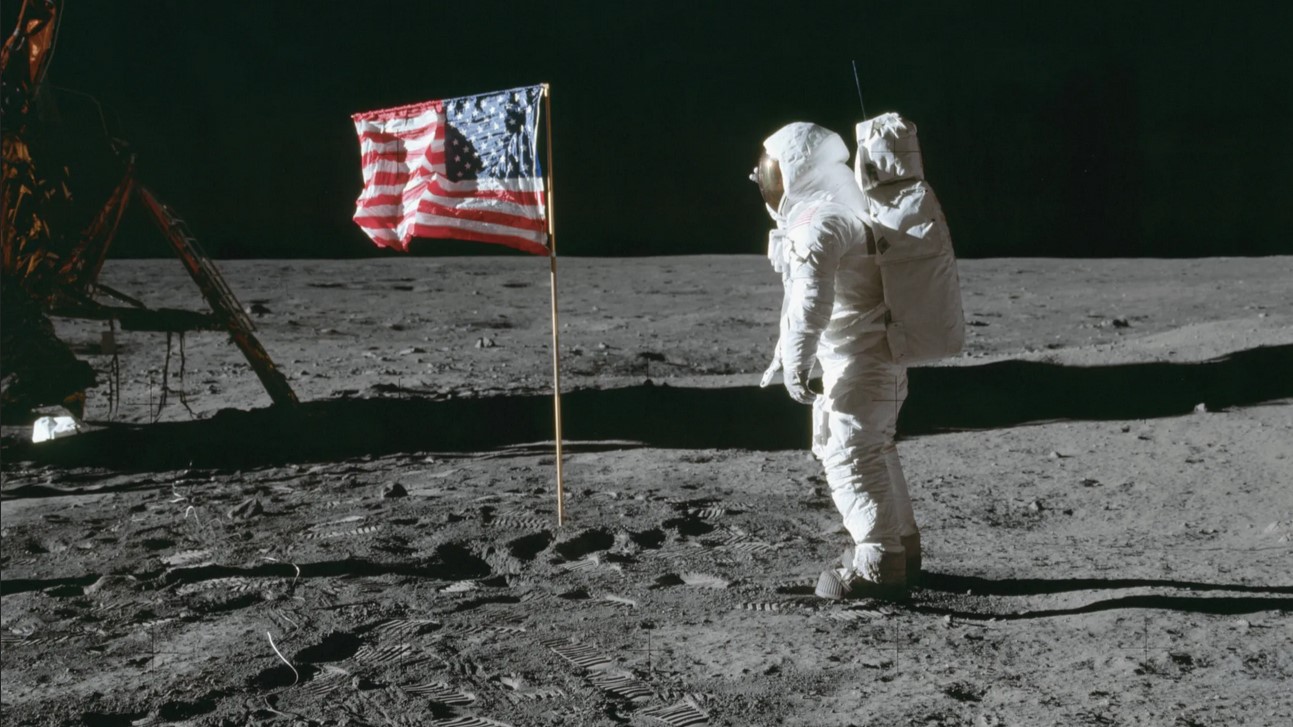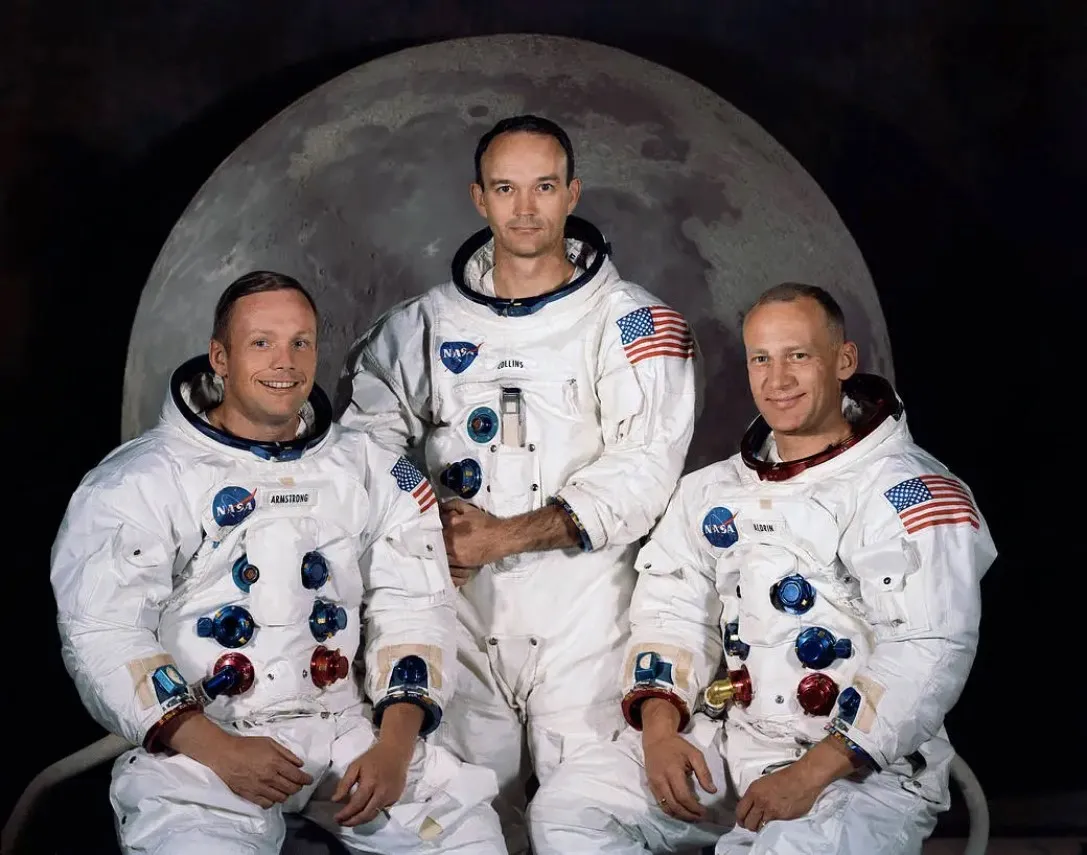

Fifty-five years ago today, humans landed on the Moon. On the mission were three American pilots, all military pilots who had served as combat or test pilots before heading to space.
Apollo 11’s lunar module reached the surface of the Moon on July 20, 1969. It was the culmination of nine years of work by the Apollo program. The three-person crew of Neil Armstrong, Buzz Aldrin and Michael Collins were all veteran pilots from the Navy and Air Force.
Neil Armstrong served as mission commander. He joined the U.S. Navy in 1949, soon earning his flight wings and serving in the Korean War. He flew 78 combat missions during his service in the conflict. After the war, he served in the reserves, and resigned his commission in 1960 to work for NASA. He left the military as a lieutenant. He had previously gone to space as commander of the Gemini 8 mission. During Apollo 11, Armstrong partially manually guided the landing craft to the surface. Once on ground, he became the first human to ever set foot on the Moon. He died in 2012, the first of the Apollo 11 to pass.
Michael Collins graduated West Point in 1952, opting to join the Air Force. He served as a fighter pilot for several years before transitioning into test piloting. He was part of the third group of NASA astronauts and went into space with Gemini 10. During Apollo 11, Collins was in charge of the command module Columbia while Armstrong and Aldrin went down to the lunar surface. After Apollo 11, Collins worked for the State Department, but remained in the U.S. Air Force Reserves. He retired in 1976 with the rank of major general. Collins died in 2021 at the age of 90.
Edwin “Buzz” Aldrin accompanied Armstrong to the landing site. He graduated from West Point in 1951, joined the Air Force and went to Korea. He flew 66 combat missions, scoring two kills against MiG-15s. He joined NASA in 1963, serving as part of Gemini 12. Aldrin piloted the lunar module. Aldrin retired from the military in 1972 and has been an advocate for continued space exploration. He is currently the last surviving member of the crew, after Collins’s death.

The crew of Apollo 11 took off from Kennedy Space Center on July 16, 1969. On July 19, the three entered lunar orbit. On July 20, after multiple revolutions, Armstrong and Aldrin entered the Eagle lunar module and set off for the surface. The Eagle landed in the Sea of Tranquility. Armstrong then addressed NASA, saying “Houston, Tranquility Base here. The Eagle has landed.”
Subscribe to Task & Purpose Today. Get the latest military news and culture in your inbox daily.
It was the culmination of years of work, from different military space programs, to NASA’s Gemini and Apollo programs. It had been dangerous. The crew of Apollo 1, Air Force pilots Gus Grissom and Ed White along with naval aviator Roger Chaffee, died on Jan. 27, 1967 after a fire engulfed the command module during a rehearsal ahead of the mission. The Apollo 11 mission crew placed memorials on the surface bearing Grissom, Chaffee and White’s names, along with some honoring cosmonauts Vladimir Komarov and Yuri Gagarin, who had died in training or space mission accidents.
In 1968, the crew of Apollo 8 — featuring Air Force pilots Frank Borman and William Anders along with naval aviator James Lovell — became the first humans to enter lunar orbit. In May 1969, just two months before Apollo 11, Apollo 10 flew to lunar orbit in a test run of the systems used in the successful lunar landing.
The Apollo 11 crew returned to Earth on July 24, 1969. The last Apollo mission, Apollo 17, reached the Moon in 1972. It was the last time humans would walk on the lunar surface.
The latest on Task & Purpose
- Here are the ships the U.S. plans to sink in the Pacific this summer
- USS John Basilone, warship named for legendary Marine, delivered to the Navy
- Army graduates first class of recruiting warrant officers
- Navy fires captain of ship that ran aground in Africa
- Do I have to go to my IRR muster duty event?
